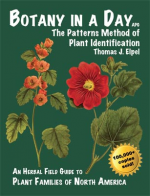THIS:
View attachment 390827
COMPLETELY CHANGED how I looked at plants, and, for me, made plant identification and knowledge MUCH, MUCH EASIER!!
I have also studied the culinary AND MEDICAL uses of plants over about the past 7 years. I feel very comfortable knowing I can provide all of my fresh vegetable food from wild plants. The kicker, of course, is getting enough PROTEIN, and, to a lesser degree, fats. There are plants that provide these needs, but those would require cultivation, as they do not grow in enough quantity unaided in nature, to satisfy nutritional needs.
I find that a better idea is to find the plants that make my chickens and rabbits fat and sassy, and provide these plants to them as a way to "grow" protein from plants.
As far as mushrooms, I had a severe reaction to some that were gathered by myself and a lady who was very knowledgeable about mushrooms. So, I caution EVERYONE to be VERY CAREFUL in eating wild mushrooms, as EVEN IF a mushroom is generally considered safe to eat, SOME INDIVIDUALS MAY HAVE ALLERGIC REACTIONS. My








